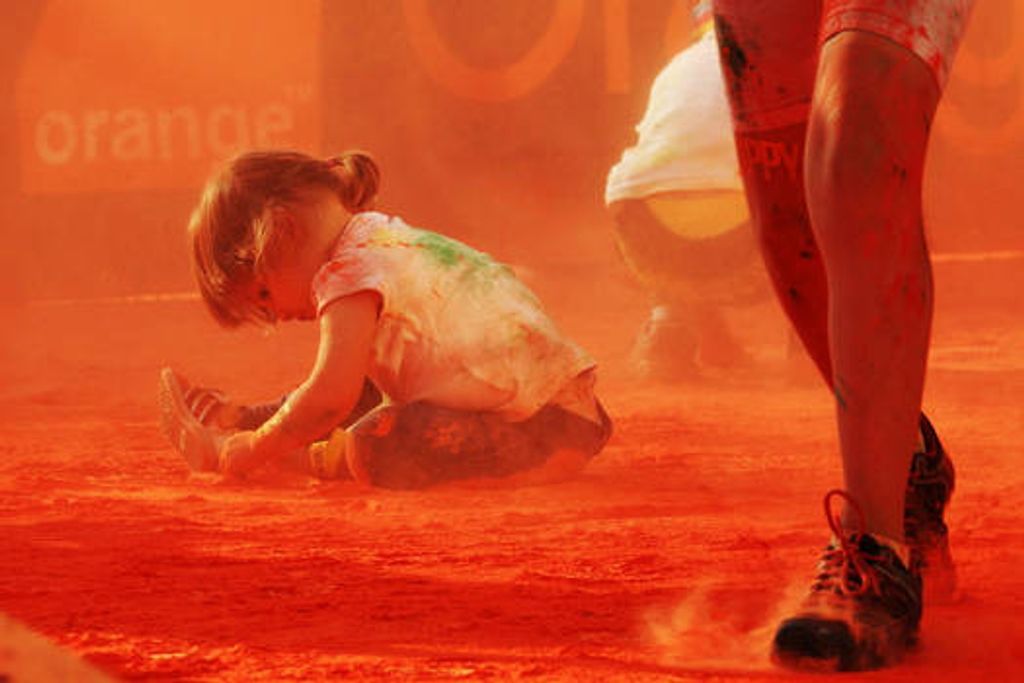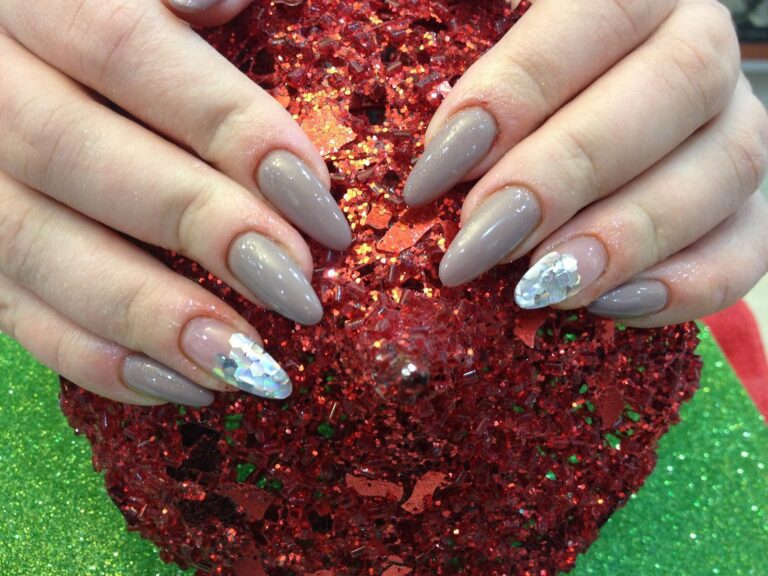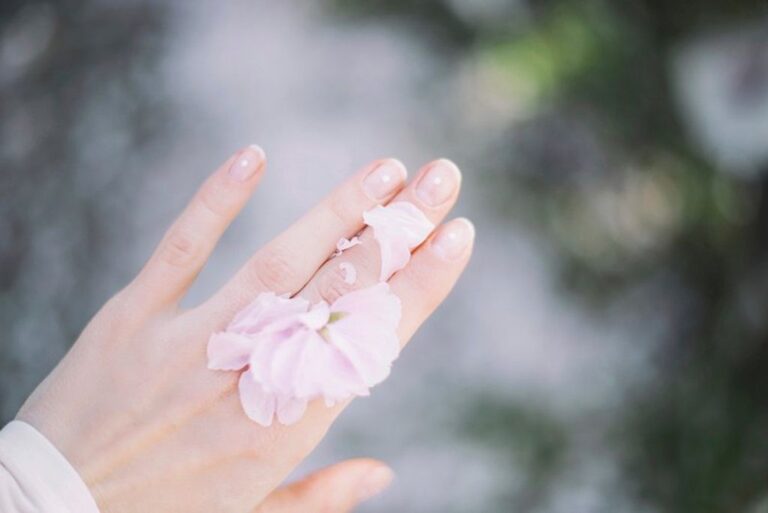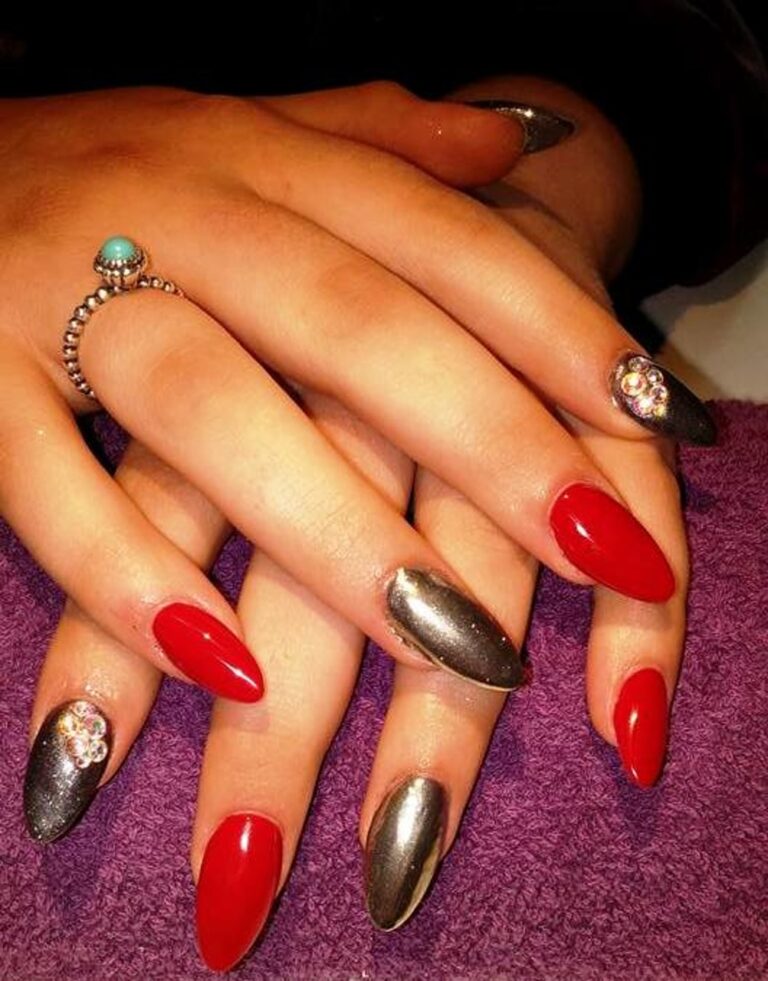“Biting Consequences: Can Nails Grow Back After Biting?”
Nail biting is a common habit that can have significant effects on the health and appearance of our nails. This article explores the anatomy of nails, the consequences of nail biting, the possibility of nail regeneration, practical steps for nail recovery, and the psychological aspects of overcoming this habit. By delving into these topics, we aim to provide a comprehensive understanding of nail biting and recovery.
Key Takeaways
- Nail biting can lead to long-term damage to nails and surrounding tissue.
- Nutrition plays a crucial role in promoting nail recovery.
- Addressing underlying anxiety and stress is essential for overcoming nail biting.
- Behavioral therapies are effective in treating nail biting habits.
- Successful nail recovery requires a combination of protective measures and healthy nail growth practices.
Understanding Nail Anatomy and Growth

The Structure of the Nail
The human nail is a complex structure that plays a critical role in the protection of fingertips and enhancement of fine touch. Composed of a hard, protective protein called keratin, nails are more than just a canvas for cosmetic beauty; they are a reflection of our overall health.
Nails consist of several parts, including the nail plate, nail bed, cuticle, nail folds, and the growth area known as the matrix. The nail plate, the part we typically refer to as the nail, is made of translucent keratinized cells that are firmly cemented together and rest on the nail bed. The cuticle seals the space between the nail plate and skin, protecting the nail matrix from infection.
- Proper nail care is essential to maintain the integrity of these structures and ensure healthy nail growth. Regular moisturizing and protection from harsh chemicals can prevent damage to the nail and surrounding tissue.*
How Nails Grow: The Biological Process
Nails are a fascinating aspect of human biology, growing continuously throughout our lives. The process of nail growth begins at the nail matrix, an area under the skin at the nail’s base. Here, new nail cells are produced and then pushed out, causing the older cells to flatten and harden. This hardened substance is what we see as the nail plate, which slides forward over the nail bed as it grows.
The speed of nail growth can vary due to several factors, such as age, nutrition, and health. For instance, nails typically grow faster in younger individuals and during the summer months. A balanced diet rich in vitamins and minerals is essential for maintaining healthy nail growth. Protein, in particular, is crucial as nails are primarily composed of a protein called keratin.
Tip: To promote nail health, consider incorporating biotin-rich foods into your diet, such as eggs, almonds, and whole grains, as biotin has been shown to support nail strength and growth.
Factors Influencing Nail Growth and Health
Several factors play a pivotal role in the health and growth rate of nails. Nutrition is a cornerstone; vitamins and minerals such as biotin, vitamin E, and iron are essential for strong nail development. Hormonal changes, particularly during pregnancy, can also significantly affect nail growth, often leading to faster growth rates.
External factors including exposure to chemicals, frequent water immersion, and harsh environmental conditions can compromise nail integrity. It’s important to protect nails from these elements to maintain their health. Stress and lack of sleep may indirectly influence nail health by affecting overall body wellness.
Consistent care and awareness of these factors can greatly improve nail health and growth over time.
Understanding these variables can help in creating a tailored approach to nail care that addresses individual needs and promotes optimal nail growth.
The Habit of Nail Biting: Causes and Effects

Psychological Triggers for Nail Biting
Understanding the psychological triggers for nail biting is crucial in addressing this habit effectively. Stress, anxiety, and boredom are common triggers that lead to nail biting. These triggers often manifest as a subconscious response to emotional or mental discomfort. Identifying and addressing these triggers is a key step in breaking the habit of nail biting. It’s important to recognize that nail biting is often a coping mechanism for underlying psychological stressors, and addressing these stressors is essential for successful recovery. Additionally, creating a supportive environment and seeking professional help can significantly aid in managing these triggers and overcoming the habit of nail biting.
Physical Consequences of Chronic Nail Biting
Chronic nail biting can lead to significant damage to the nails, fingers, and cuticles. The repetitive trauma from biting can cause the nails to become weak, brittle, and prone to infections. Additionally, the surrounding skin may experience irritation and inflammation, leading to discomfort and potential infections. It’s important to address this habit to prevent long-term consequences and promote nail health.
Long-Term Damage to Nails and Surrounding Tissue
Chronic nail biting can lead to long-term damage to the nails and the surrounding tissue. Over time, this compulsive habit can result in a range of detrimental effects, from aesthetic concerns to serious health issues.
Deformation of the nail plate is a common consequence, as the constant biting and tearing can alter the shape and texture of the nails. In some cases, the nail may become irregular, ridged, or even permanently stunted in growth. The cuticle and surrounding skin are also at risk, with potential for infections and scarring.
Beyond the visible damage, there are underlying conditions that may arise from persistent nail biting. Onychomycosis, a fungal infection, can develop, leading to symptoms such as thickening, discoloration, and pain. Similarly, periungual warts, caused by the human papillomavirus (HPV), can affect the nail bed and disrupt normal nail growth.
Tip: To mitigate the risk of long-term damage, it is crucial to address the habit of nail biting promptly and seek appropriate treatment for any complications that have already arisen.
The table below summarizes the potential long-term effects of nail biting on nail health:
| Effect | Description |
|---|---|
| Deformation | Altered shape and texture of the nail plate |
| Infections | Increased risk of fungal and bacterial infections |
| Scarring | Permanent marks on the cuticle and surrounding skin |
| Pain | Discomfort associated with infections and tissue damage |
It is important to recognize that while nails can recover from damage over time, the healing process is slow and may require medical intervention for severe cases.
Regeneration of Nails: Separating Myths from Facts

Can Nails Truly Regrow After Severe Biting?
The question of whether nails can regrow after severe biting is one that concerns many who struggle with this habit. The good news is that nails are a regenerative part of the body, which means they have the ability to grow back over time. However, the extent of the damage and the individual’s overall health play crucial roles in this process.
Consistency in the nail’s environment and care is key to recovery. Factors such as the presence of infection, the level of damage to the nail bed, and nutritional deficiencies can impede the regrowth process. Here’s a brief overview of what to expect:
- Initial healing of any wounds or infections.
- Regrowth of the nail plate from the nail matrix.
- Gradual improvement in nail strength and texture.
Tip: Patience is essential. Nail regrowth is a slow process, often taking several months to a year to fully recover, depending on the severity of the damage.
It’s important to note that while nails can recover from biting, repeated trauma may lead to permanent changes. These changes can affect the nail’s shape, texture, and growth rate. Therefore, addressing the habit itself is as important as treating the nails.
The Role of Nutrition in Nail Recovery
Proper nutrition plays a pivotal role in the recovery and regeneration of nails after severe biting. Nutrients such as proteins, vitamins, and minerals are the building blocks for healthy nail growth. For instance, biotin, a B-vitamin, is renowned for its nail-strengthening properties.
Essential nutrients that aid in nail recovery include:
- Protein: Provides the structure of the nail.
- Iron: Prevents brittle nails and supports oxygen supply.
- Zinc: Aids in nail tissue growth and repair.
- Omega-3 fatty acids: Moisturize the nail bed and improve nail health.
- Vitamin C: Essential for collagen production, which is crucial for nail strength.
Incorporating a balanced diet rich in these nutrients can significantly enhance the nail’s ability to regenerate. Foods such as lean meats, leafy greens, nuts, seeds, and whole grains are excellent sources of the aforementioned nutrients.
Tip: Consistency in maintaining a nutrient-rich diet is key to seeing improvements in nail health over time.
Debunking Common Misconceptions About Nail Regrowth
When it comes to nail regrowth, misinformation can often lead to frustration and misguided efforts. One of the most pervasive myths is that nails need to breathe in order to grow healthily. In reality, nails are composed of dead cells and do not require oxygen from the air; the nail bed supplies all necessary nutrients through the bloodstream.
Another common misconception is that certain products can miraculously speed up nail growth. While proper nutrition and care can support nail health, no external product can significantly alter the growth rate of your nails, which is largely determined by genetics.
Tip: Consistent care and avoiding harsh chemicals are key to maintaining nail strength and preventing breakage, which can give the appearance of faster growth.
It’s also important to note that while nails can recover from damage, severe or repeated trauma may lead to permanent changes. Understanding these facts can empower individuals to make informed decisions about their nail care routine.
Practical Steps to Nail Recovery and Care

Treatment Options for Bitten Nails
The journey to restoring nails that have been compromised by biting begins with a comprehensive treatment plan. One of the first steps is the application of deterrents such as bitter-tasting nail polishes. These products, often containing denatonium benzoate, are designed to discourage the act of nail biting through their unpleasant taste.
Hydration is also crucial for healing. Moisturizing the nails and cuticles can prevent further damage and support recovery. Over-the-counter creams and oils specifically formulated for nail care can be applied regularly to promote nail strength and flexibility.
In more severe cases, a consultation with a dermatologist or a specialized nail technician may be necessary. They can provide professional treatments and guidance tailored to the individual’s condition. Below is a list of common treatment options:
- Bitter-tasting nail polish
- Hydrating creams and oils
- Professional manicures
- Behavioral therapy
Tip: Consistency is key in nail recovery. Regular application of treatments and conscientious care can significantly improve the condition of bitten nails over time.
Protective Measures to Prevent Further Damage
Once nails have been compromised by biting, it’s crucial to implement protective measures to prevent further damage and encourage healing. Keeping nails clean and hydrated is the first step; regular cleaning with a gentle brush and mild soap can prevent infection and support nail strength. Additionally, minimizing exposure to harsh chemicals by wearing gloves during household chores can be beneficial.
- Use a cuticle-care product to maintain nail bed health.
- Apply strengthening products that help repair nail keratin.
- Avoid traumatic stimuli such as bandages or gloves that are too tight.
Tip: Consistently moisturizing the nails and cuticles can significantly improve the resilience of nails, making them less prone to splitting and breaking.
By adhering to these practices, individuals can create an optimal environment for nail recovery and protect against the negative impacts of nail biting.
Best Practices for Promoting Healthy Nail Growth
Achieving strong and healthy nails is a process that requires consistent care and attention. One of the most critical factors in promoting nail growth is hydration. Regular use of a moisturizer or cuticle oil can prevent dryness, which often leads to brittleness and breakage.
In addition to hydration, a balanced diet plays a pivotal role in nail health. Incorporating foods rich in vitamins and minerals, particularly calcium, can fortify nails from within. Supplements may also be beneficial for those who find it challenging to meet their nutritional needs through diet alone.
Tip: Massage your nails and cuticles regularly to stimulate blood flow, which can enhance growth and strength.
Here is a simple list of best practices for nail care:
- Keep nails clean and dry to prevent fungal infections.
- Avoid harsh chemicals by wearing gloves when cleaning or doing dishes.
- Trim nails regularly to prevent snags and tears.
- File nails in one direction to minimize damage.
- Give your nails a break from polish and artificial nails to allow them to breathe.
Psychological Aspects of Nail Biting and Recovery

Addressing the Underlying Anxiety and Stress
The compulsion to bite one’s nails often stems from anxiety or stress, making it crucial to address these underlying emotions as part of the recovery process. Techniques such as mindfulness and positive affirmations can play a significant role in reducing the urge to bite. Mindfulness encourages present-moment awareness, which can interrupt the automatic behavior of nail biting.
Positive affirmations also serve as a powerful tool, helping to rewire thought patterns and lessen the stress that triggers nail biting. Incorporating daily habits that promote relaxation, such as light exercise or a hobby, can further aid in managing stress levels.
Tip: Start by introducing one calming habit at a time, and gradually build a routine that supports your mental well-being and nail health.
Behavioral therapy or counseling may be necessary for some individuals to explore the deeper psychological reasons for nail biting. This approach can provide long-term strategies for coping with stress and anxiety, reducing the likelihood of relapse into old habits.
Behavioral Therapies for Nail Biting
Behavioral therapies offer a ray of hope for those struggling with the compulsive habit of nail biting. Among the most effective is Cognitive-behavioral therapy (CBT), which addresses the underlying psychological patterns that trigger the behavior. CBT involves identifying the situations and emotional states that lead to nail biting and developing healthier coping strategies.
Another promising approach is the use of Havening Techniques. This method involves gentle brushing across the palms, shoulders, and face, combined with guided imagery to induce a state of calm. It’s believed to create beneficial delta and theta brain waves, which are associated with relaxation.
Tip: Consistency is key in behavioral therapy. Regular sessions and practice of the techniques learned can significantly improve the chances of overcoming nail biting.
While these therapies can be powerful, they are often most effective when combined with other strategies, such as stress management and habit reversal training. Together, these methods can help individuals break free from the cycle of nail biting and move towards healthier nail habits.
The Journey to Recovery: A Psychological Perspective
The path to overcoming nail biting is not solely a physical one; it is deeply intertwined with psychological resilience and self-awareness. Recognizing the triggers that lead to nail biting is a critical first step. It’s important to understand that this habit often serves as a coping mechanism for stress or anxiety.
Developing new, healthier stress-relief strategies is essential. Here are some steps to consider on your journey:
- Identifying personal stressors and triggers
- Learning and practicing relaxation techniques
- Establishing a support system of friends, family, or professionals
- Setting realistic goals and celebrating small victories
Tip: Consistency is key. Implementing these strategies as part of your daily routine can significantly improve your chances of recovery.
Remember, the journey to recovery is a marathon, not a sprint. Patience and perseverance will be your allies as you work towards breaking the cycle of nail biting and embracing healthier habits for both mind and body.
Success Stories: Overcoming Nail Biting

Real-Life Examples of Nail Regeneration
The journey of nail regeneration is often marked by inspiring success stories that highlight the resilience of the human body. Individuals who have overcome the habit of nail biting frequently share their experiences, demonstrating that with patience and proper care, nails can indeed recover from damage. Here are a few notable examples:
- A beauty editor discovered that BIAB (Builder in a Bottle) manicures allowed her to grow her natural nails much longer than before, lasting around three to four weeks.
- Another individual turned to marine collagen, finding it an effective method to not only speed up nail growth but also to achieve stronger, more beautiful nails.
- Personal testimonies on platforms like Lemon8 reveal people embarking on journeys to grow out their natural nails, aiming for strength and health.
Tip: Consistent moisturizing and avoiding harsh treatments like gel manicures can significantly aid in the recovery process of bitten nails.
These anecdotes serve as a testament to the fact that nails can regenerate, and they also provide valuable insights into the methods that can support this process. It’s important to remember that while nail growth varies from person to person, the underlying principles of nail care remain constant.
What We Can Learn from Successful Recovery Cases
The journey of overcoming nail biting is as unique as the individuals who embark on it. However, successful recovery cases often share common threads that can provide valuable insights for others. One key takeaway is the importance of positive reinforcement. As seen in various instances, rewarding oneself for abstaining from nail biting can significantly bolster the recovery process.
Another lesson is the adaptability in treatment approaches. For example, some may require medical interventions for infections resulting from severe nail biting, while others benefit from behavioral strategies like wearing gloves to introduce a physical barrier.
Consistency in the recovery efforts is also crucial. Long-term success stories often involve individuals who have implemented structured routines, such as regular nail care or therapy sessions, to maintain their nail health and manage underlying stress or anxiety.
Remember: Recovery from nail biting is not a linear process. Setbacks can occur, but acknowledging them and proactively seeking solutions is a part of the healing journey.
Maintaining Nail Health After Recovery
Once you’ve successfully overcome the habit of nail biting and your nails have regenerated, maintaining their health is crucial. A consistent nail care routine is key to preventing relapse and ensuring that your nails remain strong and attractive. Here are some best practices to keep in mind:
- Hydration is essential; drink plenty of water and use moisturizing lotions to keep your nails and cuticles well-hydrated.
- Protect your nails by wearing gloves when doing household chores or using harsh chemicals.
- Maintain a balanced diet rich in vitamins and minerals that support nail health, such as biotin, vitamin E, and iron.
- Regularly trim and file your nails to prevent snags and tears that could tempt you to bite.
Tip: Be mindful of your nails’ condition and seek professional advice if you notice any abnormalities or persistent issues.
Remember, the journey to recovery is not just about regrowth; it’s about cultivating habits that will safeguard your nails’ health for the long term. By adhering to these guidelines, you can enjoy the benefits of strong, healthy nails and the confidence that comes with them.
Are you tired of struggling with nail biting? At NAILinspire.com, we believe in the power of transformation. Our success stories of overcoming nail biting will inspire you to take control of your nail habits and embrace a healthier, more beautiful lifestyle. Join our community today and discover the ultimate online nail art design library that will empower you to express your creativity and style.
Frequently Asked Questions
Can nails regrow after severe biting?
Yes, nails have the ability to regrow after severe biting, but it may take time and proper care for the regrowth to occur.
What role does nutrition play in nail recovery?
Nutrition plays a significant role in nail recovery as certain vitamins and minerals are essential for promoting healthy nail growth and strength.
Are there common misconceptions about nail regrowth?
Yes, there are common misconceptions about nail regrowth, such as the belief that nails cannot regrow after severe damage. However, with proper care, nails can regenerate.
What are the best treatment options for bitten nails?
Treatment options for bitten nails include keeping the nails clean and moisturized, using nail strengtheners, and seeking professional help if the habit is causing distress.
How can I protect my nails to prevent further damage?
To protect your nails and prevent further damage, consider using a bitter-tasting nail polish, wearing gloves, and practicing stress-relief techniques to reduce the urge to bite.
What are the psychological aspects of nail biting and recovery?
Nail biting is often linked to underlying anxiety and stress, and addressing these psychological factors is crucial for successful recovery. Behavioral therapies can also be effective in breaking the habit.





